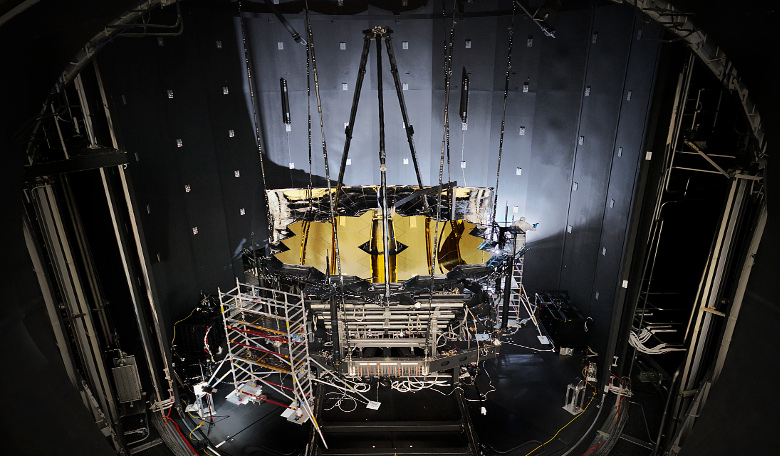The Harris Corporation – a leading technology innovator in avionics, space and intelligence – has partnered with NASA’s Johnson Space Center to successfully complete thermal vacuum testing for the James Webb Space Telescope (JWST); confirming that the soon-to-be-launched observatory is ready for the frigid, airless environment of space.
The Webb telescope is set to improve our understanding of the Universe in ways like the Hubble Space telescope did when it was launched over 17 years ago. But instead of looking at ultra-violet, optical and infrared wavelengths like Hubble did, the JWST will concentrate on near- and mid-infrared light only (from 0.6 to 28 micrometers).
Infrared light is especially important as it will help reveal the first stars and galaxies that formed after the Big Bang. It is also at infrared wavelengths that researchers are able to peer inside dust enshrouded clouds to 'see' the birth places of star and planetary systems and therefore observe processes which would normally be obscured from our eyes. The Webb telescope is thus hoping to unravel some of the greatest mysteries of the Universe, from discovering the first stars and galaxies that formed to studying the atmospheres of planets around other stars.
Harris, who provide mission-critical solutions to all forms of industry from tactical communications to air traffic management and environmental solutions, were also instrumental in safeguarding the telescope in Houston during Hurricane Harvey and ensured uninterrupted testing – including monitoring more than 1,000 sensors on the telescope around the clock.
In addition, the Harris team have also been at the forefront of the multi-wavelength interferometer system that will be used on the JWST. This involved the alignment of 18 mirror segments into one 6.5-meter phased primary mirror to verify optical quality and placement.
“This testing culminates 15 years of hard work by our Harris team," said Rob Mitrevski, vice president and general manager, Intelligence, Surveillance and Reconnaissance, Harris Space and Intelligence Systems. "This extraordinary program is certain to dramatically increase our knowledge of the Universe.”
Harris engineers integrated all 18 mirror segments on the Webb telescope, as well as designed and installed the cryogenic test equipment, including a simulator to mimic the temperature of the Sun. Harris also built the structure that held and isolated the telescope during vibration and acoustic testing.
Now that the environmental, thermal and optical tests are complete, the Webb telescope will be shipped to California where it will be joined with the spacecraft to form the complete observatory.











